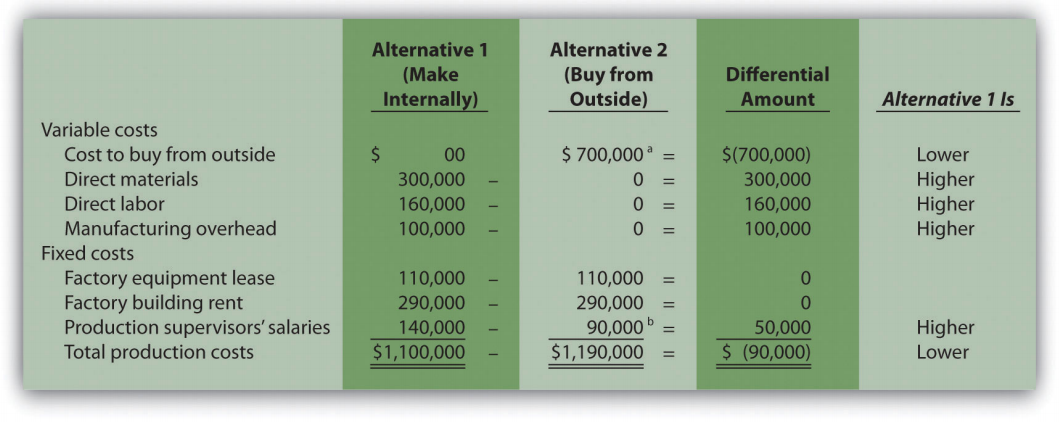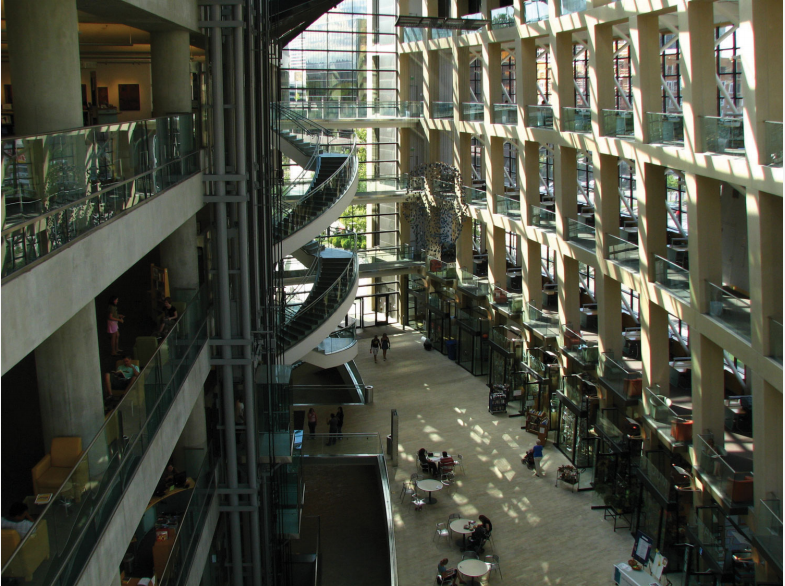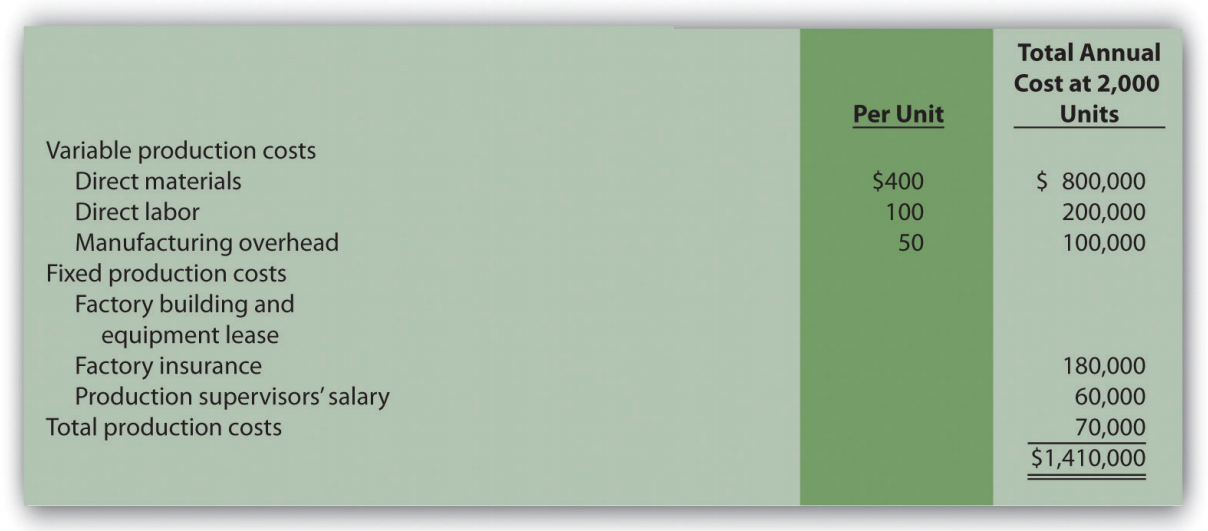51 7.3 Make-or-Buy Decisions
-
Last updated
- Dec 28, 2020
Learning Objectives
- Use differential analysis for make-or-buy decisions.
Question: With the differential analysis format in hand, we can now go back to Best Boards, Inc., introduced at the beginning of the chapter. Recall that Best Boards produces each wakeboard for $110, and Jim Muller, vice president of operations, received a bid for $70 per board from an outside manufacturer. Best Boards’ president asked the company’s accountant, Amy Eckstrom, to investigate whether it makes sense for Best Boards to hire an outside company to produce the wakeboards. What information should Amy provide that will help management make this decision?
- Determining Differential Product Costs
Question: What information did Amy find to help Best Boards with the decision whether to make their own wakeboards or buy them from an outside supplier?
-
-
Question: Amy must now prepare a differential analysis to determine which alternative is best for the company. Her analysis appears in Figure 7.2. Because the focus of make-or-buy decisions is on product costs, and because sales revenue is not differential to this decision, it is not necessary to include sales revenue in the analysis. This in turn eliminates the need to show the contribution margin or net income. (Even if sales revenue were included, the outcome would remain the same.) What does Amy’s analysis tell us?

a $700,000 = $70 per unit × 10,000 units.
b One supervisor must be paid $90,000 per year even if the company buys the product. The other supervisor, who is paid $50,000 per year, can be let go if the company buys the product.
Using a Summary Format for Differential Analysis
Question: The Differential Amount column presented in Figure 7.2 indicates Best Boards would be better off producing wakeboards internally. However, management may want a more concise explanation of why production costs are $90,000 higher when outsourcing production. How can we present this information in a more concise format?
Business in action 7.1 – Outsourcing Construction

Source: Photo courtesy of C.G.P. Grey, http://www.cgpgrey.com/.
Salt Lake City, Utah, recently built a $65 million library. The library’s façade was assembled from precast concrete panels that a company called Pretecsa produced in a plant near Mexico City. Trucks hauled 140 truckloads of these panels—each truckload averaging 10 tons—2,350 miles from Mexico City to Salt Lake City. In all, four million pounds of concrete were shipped. As the director of Pretecsa noted, “The idea of manufacturing a building a couple of thousand miles away and then exporting it, well it was considered crazy.”
The manager in charge of the library construction had tried to obtain the concrete panels from sources in the United States. He stated, “We contacted precast contractors in Phoenix, Denver, and Las Vegas, but they didn’t feel they could do it cheaply enough, once you factored in their shipping costs. Pretecsa’s low-cost labor made up for the higher shipping costs, and they came in the cheapest.”
Pretecsa disclosed that it took 163,000 labor hours to produce the concrete panels and charged $2.5 million for all its services, including materials. Labor costs alone in the United States would have been $3 million.
Source: Joel Millman, “Blueprint for Outsourcing,” The Wall Street Journal, March 3, 2004.
Key Takeaway
Review problem 7.2
Quality Bikes, Inc., currently produces racing bikes. Management is interested in outsourcing production of these bikes to a reputable manufacturing company that can supply the bikes for $600 per unit. Quality Bikes incurs the following annual production costs to produce 2,000 racing bikes internally:

Outsourcing production eliminates all variable production costs, the production supervisor’s salary, and factory insurance costs. Factory building and equipment lease costs will remain the same regardless of the decision to outsource or to produce internally.
- Perform differential analysis using the format presented in Figure 7.2. Assume making the bike internally is Alternative 1, and buying the bike from an outside manufacturer is Alternative 2.
- Which alternative is best? Explain.
- Summarize the result of outsourcing production using the format presented in Figure 7.3.
Definition
- A cost that can be avoided, or eliminated, if one alternative is chosen over another.


